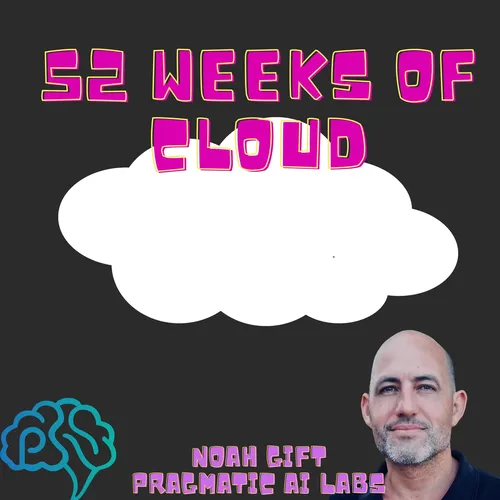Vector Databases
- Author
- Pragmatic AI Labs
- Published
- Wed 05 Mar 2025
- Episode Link
- podcast.paiml.com
Vector Databases for Recommendation Engines: Episode Notes
Introduction
- Vector databases power modern recommendation systems by finding relationships between entities in high-dimensional space
- Unlike traditional databases that rely on exact matching, vector DBs excel at finding similar items
- Core application: discovering hidden relationships between products, content, or users to drive engagement
Key Technical Concepts
Vector/Embedding: Numerical array that represents an entity in n-dimensional space
- Example: [0.2, 0.5, -0.1, 0.8] where each dimension represents a feature
- Similar entities have vectors that are close to each other mathematically
Similarity Metrics:
- Cosine Similarity: Measures angle between vectors (-1 to 1)
- Efficient computation: dot_product / (magnitude_a * magnitude_b)
- Intuitively: measures alignment regardless of vector magnitude
Search Algorithms:
- Exact Nearest Neighbor: Find K closest vectors (computationally expensive)
- Approximate Nearest Neighbor (ANN): Trades perfect accuracy for speed
- Computational complexity reduction: O(n) → O(log n) with specialized indexing
The "Five Whys" of Vector Databases
Traditional databases can't find "similar" items
- Relational DBs excel at WHERE category = 'shoes'
- Can't efficiently answer "What's similar to this product?"
- Vector similarity enables fuzzy matching beyond exact attributes
Modern ML represents meaning as vectors
- Language models encode semantics in vector space
- Mathematical operations on vectors reveal hidden relationships
- Domain-specific features emerge from high-dimensional representations
Computation costs explode at scale
- Computing similarity across millions of products is compute-intensive
- Specialized indexing structures dramatically reduce computational complexity
- Vector DBs optimize specifically for high-dimensional similarity operations
Better recommendations drive business metrics
- Major e-commerce platforms attribute ~35% of revenue to recommendation engines
- Media platforms: 75%+ of content consumption comes from recommendations
- Small improvements in relevance directly impact bottom line
Continuous learning creates compounding advantage
- Each customer interaction refines the recommendation model
- Vector-based systems adapt without complete retraining
- Data advantages compound over time
Recommendation Patterns
Content-Based Recommendations
- "Similar to what you're viewing now"
- Based purely on item feature vectors
- Key advantage: works with zero user history (solves cold start)
Collaborative Filtering via Vectors
- "Users like you also enjoyed..."
- User preference vectors derived from interaction history
- Item vectors derived from which users interact with them
Hybrid Approaches
- Combine content and collaborative signals
- Example: Item vectors + recency weighting + popularity bias
- Balance relevance with exploration for discovery
Implementation Considerations
Memory vs. Disk Tradeoffs
- In-memory for fastest performance (sub-millisecond latency)
- On-disk for larger vector collections
- Hybrid approaches for optimal performance/scale balance
Scaling Thresholds
- Exact search viable to ~100K vectors
- Approximate algorithms necessary beyond that threshold
- Distributed approaches for internet-scale applications
Emerging Technologies
- Rust-based vector databases (Qdrant) for performance-critical applications
- WebAssembly deployment for edge computing scenarios
- Specialized hardware acceleration (SIMD instructions)
Business Impact
E-commerce Applications
- Product recommendations drive 20-30% increase in cart size
- "Similar items" implementation with vector similarity
- Cross-category discovery through latent feature relationships
Content Platforms
- Increased engagement through personalized content discovery
- Reduced bounce rates with relevant recommendations
- Balanced exploration/exploitation for long-term engagement
Social Networks
- User similarity for community building and engagement
- Content discovery through user clustering
- Following recommendations based on interaction patterns
Technical Implementation
Core Operations
- insert(id, vector): Add entity vectors to database
- search_similar(query_vector, limit): Find K nearest neighbors
- batch_insert(vectors): Efficiently add multiple vectors
Similarity Computation
- fn cosine_similarity(a: &[f32], b: &[f32]) -> f32 {
let dot_product: f32 = a.iter().zip(b.iter()).map(|(x, y)| x * y).sum();
let mag_a: f32 = a.iter().map(|x| x * x).sum::().sqrt();
let mag_b: f32 = b.iter().map(|x| x * x).sum::().sqrt();
if mag_a > 0.0 && mag_b > 0.0 {
dot_product / (mag_a * mag_b)
} else {
0.0
}
}
Integration Touchpoints
- Embedding pipeline: Convert raw data to vectors
- Recommendation API: Query for similar items
- Feedback loop: Capture interactions to improve model
Practical Advice
Start Simple
- Begin with in-memory vector database for <100K items
- Implement basic "similar items" on product pages
- Validate with simple A/B test against current approach
Measure Impact
- Technical: Query latency, memory usage
- Business: Click-through rate, conversion lift
- User experience: Discovery satisfaction, session length
Scaling Strategy
- Start with exact search, move to approximate methods as needed
- Invest in quality of embeddings over algorithm sophistication
- Build feedback loop for continuous improvement
Key Takeaways
- Vector databases fundamentally simplify recommendation architecture
- Mathematical foundation: similarity = proximity in vector space
- Strategic advantage comes from data quality and feedback loops
- Modern implementation enables web-scale recommendation systems with minimal complexity
- Rust-based solutions (like Qdrant) provide performance-optimized implementations
🔥 Hot Course Offers:
- 🤖 Master GenAI Engineering - Build Production AI Systems
- 🦀 Learn Professional Rust - Industry-Grade Development
- 📊 AWS AI & Analytics - Scale Your ML in Cloud
- ⚡ Production GenAI on AWS - Deploy at Enterprise Scale
- 🛠️ Rust DevOps Mastery - Automate Everything
🚀 Level Up Your Career:
- 💼 Production ML Program - Complete MLOps & Cloud Mastery
- 🎯 Start Learning Now - Fast-Track Your ML Career
- 🏢 Trusted by Fortune 500 Teams
Learn end-to-end ML engineering from industry veterans at PAIML.COM
